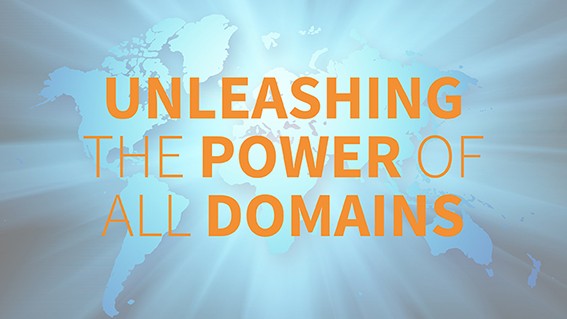.berlin, .tokyo or .vegas: How GeoTLDs Help Form Distinctive Digital Identities
Katrin Ohlmer from DOTZON explores how a city can develop and exploit a stable digital identity through a GeoTLD.

© jamesteohart | istockphoto.com
In times of ever-growing internationalization and globalization, cities and regions today are increasingly competing for investors, specialists and managers, tourists and residents. As information is mainly searched for online nowadays, the Internet is the first choice for cities and regions to provide their target groups with attractive offers and services in order to create a unique, distinctive, and competitive digital identity.
However, many cities and regions fail to address their target groups because the information they are looking for is too difficult to find. In order to create a distinctive and uniform digital identity, cities and regions have to make all their offers and services available under one single roof. GeoTLDs can help with that.
GeoTLDs are the basis for a stable digital identity
The world’s first GeoTLD was .berlin, which went online in 2014 as the city top-level domain for Germany’s capital Berlin. Soon metropolises like Tokyo, New York, and Sydney, but also regions such as the Spanish Basque and German Ruhr regions, joined this development. Today, GeoTLDs have been well adopted by citizens, businesses, and the administration, as they can do much more than simply transfer their portfolio into the digital realm. The biggest advantage of GeoTLDs is that they can bundle all the offers of a city or region under one central contact point and thus make them visible at a glance. The city or region cannot only be found more easily on the Internet, it also becomes better known and more identifiable.
In this way, GeoTLDs play an important role in strengthening the emotional bond between a city or region and its target groups. They provide a reliable local anchor that functions as a counter-weight to a city’s or region’s constant changes and progressive digitalization. Even though the latter makes citizens independent of space and time, it simultaneously causes a desire for belonging and localization. As a digital meeting place, GeoTLDs have the power to satisfy these yearnings because they remain stable even when many things are in flux due to digitalization. They thus help cities and regions to form stable digital identities.
Possible uses for GeoTLDs
GeoTLDs can be used in a variety of ways. The following examples show that they are – among other things – a valuable tool for location and tourism marketing and for the implementation of e-government services or smart city initiatives:
1) Location marketing with geographical domains
North Rhine-Westphalia, a German federal state, uses its GeoTLD .nrw as an important tool for location marketing. Since 2015, its central address has been www.land.nrw. Here, the inhabitants of North Rhine-Westphalia find an enormous variety of topics ranging from “A” like “Alter und Pflege” (“Age and Care”) to “W” like “Wohnen” (“Living”). But www.land.nrw does not just bundle all the topics of interest to the residents of a federal state centrally under one address; all topics are also summarized in clearly arranged menu items so that website visitors can find what they are looking for as fast as possible.
Numerous other examples illustrate how cities and regions use their GeoTLD for location marketing: The famous Munich Oktoberfest can be found at www.oktoberfest.bayern, New York City promotes its Botanical Garden at www.nybg.nyc, information about their Parliament is made available to Catalan citizens at www.parlament.cat and with www.bau.amsterdam, the Dutch capital has created a platform for the dance and performance field. All these examples show how great the possibilities are for public authorities, companies, and residents to use meaningful and easily memorable domains and to bundle the most diverse services and offers within a central anchor that is provided by the top-level domain.
2) Intuitive marketing for tourism
With the help of GeoTLDs, cities and regions do not only draw attention to their inhabitants, companies and organizations, but also to their visitors. Rio de Janeiro, for instance, used www.visit.rio to launch its location campaign for the 2016 Olympic Games. The website is still online three years later and is the first point of contact for anyone planning a stay in the Brazilian city. The website provides all important information under easy to find menu items, is available in several languages, and is therefore ideal for an international audience.
Brussels and Melbourne attract their future visitors with similar domain names: Both, www.visit.brussels and www.destination.melbourne are globally understandable and memorable Internet addresses that clearly describe what visitors can expect. Melbourne describes the purpose of its website right on the home page by using only two key words: “Inspiring Visitors”. At the same time, the slogan reveals what GeoTLDs can do for the different target groups of cities and regions. There are numerous other projects in metropolises like London, New York, and Paris that use their own GeoTLD. Examples are www.gotogrow.london, www.metro.paris or www.digital.nyc.
3) e-Government services are easier to find
Austria’s capital Vienna has set itself the task of turning the city into the leading digital hotspot in Europe and is using its GeoTLD .wien for this purpose. Vienna’s residents can find out about the city’s various projects at www.digitaleagenda.wien. One of these projects is to set up an e-citizen service that unites Vienna’s e-government and local offers as well as contact information safely in one place. The second lighthouse project is a city app that citizens can find at www.sags.wien (in English, the domain name means “Tell it to Vienna”) and that contains all of the city’s current and seasonal offers. Each user has the possibility to configure the app individually so that it works like a mobile assistant. It is available in several languages and therefore not only useful for Vienna’s inhabitants but also for international guests. A request and complaint function completes the app and encourages citizens to actively participate in shaping the city.
The most successful GeoTLDs in 2019
As the examples above show, GeoTLDs can be used in many different ways. A lot of cities and regions are already using them in order to be available for their target groups under one single roof. How cities perform with their digital identities is subject of the study “Digital City Brands” that DOTZON publishes annually (regions are not part of the study). The study is based on an analysis of the 37 cities worldwide that currently use GeoTLDs and thus have their own digital identity on the Internet. Based on eight factors, it examines how successful cities are in deploying their digital identities and generates a ranking of the ten best Digital City Brands. Digital City Brands 2019 was released in June with the finding that .berlin, .tokyo and .hamburg are the three most successful GeoTLDs. Anyone interested in the complete study can download both the German and the English version at the DOTZON website: https://dotzon.consulting/studien.
Katrin Ohlmer is an expert in Internet governance, Internet infrastructure, and digital brands. She is the founder and managing director of DOTZON, a consultancy specializing in developing digital brands and identities. She regularly speaks at international conferences and supports the Internet Governance Organization ICANN in developing policies which deal with the enhancement of the namespace on the Internet.
Please note: The opinions expressed in Industry Insights published by dotmagazine are the author’s own and do not reflect the view of the publisher, eco – Association of the Internet Industry.





